Missiles fly, but Ukraine's pipeline network keeps Russian gas flowing to Europe

On the world stage, the words "energy security" prompt debates about diversifying supply and decreasing reliance on bad actors, but for Sergiy Makogon, their meaning is more literal: how to keep the network of close to 40,000 kilometres of natural gas pipelines that crisscross his country functioning in the middle of a war.
On the day CBC spoke to him last week, the CEO of Ukraine's Gas Transmission System Operator was busy rerouting a pipeline near the northern city of Kharkiv that was just hit by a missile and reassuring several workers at a compressor station seized by Moscow-backed separatist fighters in Eastern Ukraine.
He was also struggling to figure out a way to get gas to Mariupol, whose residents have been cut off from heat and electricity since airstrikes damaged a pipeline more than a month ago.
"This is a humanitarian catastrophe right now in Mariupol," Makogon said on the phone from an undisclosed location in western Ukraine, where he and his staff took refuge soon after the start of the Russian invasion.
"We know very well where the pipeline is damaged, but nobody can guarantee for us the safety of our personnel. This city is fully blocked by Russian troops.... So that's why, unfortunately, we cannot restore the gas supply."
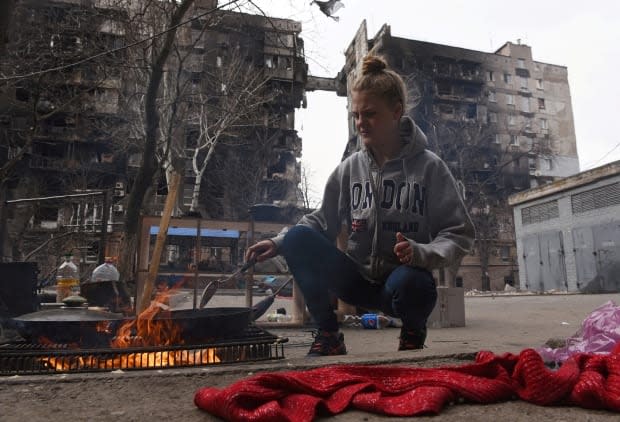
Fighting in east threatens transit
Makogon's team is responsible for the high-pressure pipelines that transport 40 billion cubic metres of natural gas per year to Europe.
The network is one link in a complex system of interdependence that keeps the lights on in Europe and provides crucial revenue for Russia. Experts say it won't be easy to unravel but that it faces its greatest threat since the West started importing large amounts of gas from the Soviet Union in the late 1980s.
"That system was created with great pride from both sides," said Margarita Balmaceda, a professor of diplomacy and international relations at Seton Hall University in New Jersey and author of several books on Russia's influence in the energy sector.
"Engineers, planners, managers were really excited to create a system … that finally was able to withstand all the political tensions over time, that could overcome the Iron Curtain."
Russia's invasion of Ukraine threatens to upend that precedent, she said, as Europe looks to scale back its dependence on Russian gas and Russia threatens to punish countries that oppose the invasion by using their gas contracts to prop up the ruble.
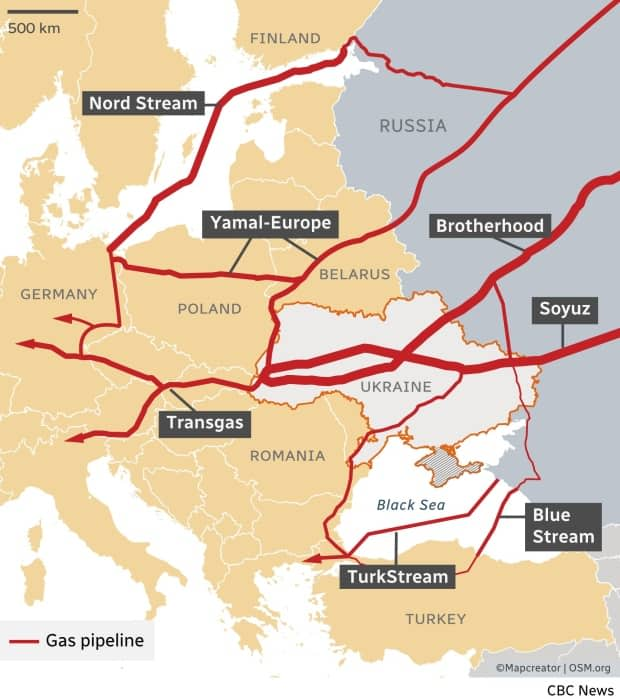
While Europe's focus has been on how the current crisis impacts its supply, the international pipelines that transit Ukraine also affect how gas moves through the local network Ukrainians rely on for heat and electricity.
Since the Russian invasion began Feb. 24, shelling has damaged several pipelines, compressor stations and distribution points, said Makogon.
"The majority of damages are related to the low-pressure pipelines because of the very heavy fighting in the cities or close to the cities."
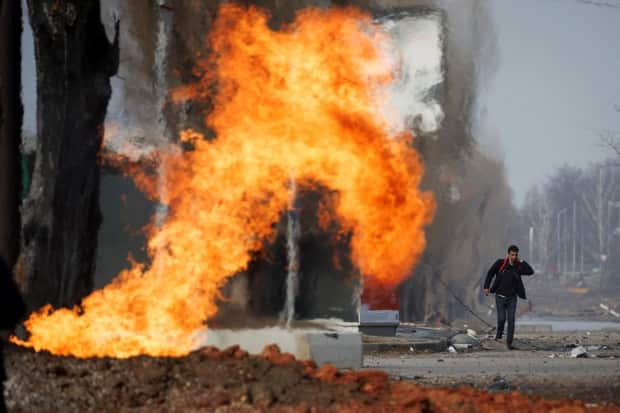
So far, other than in Mariupol, operators have found alternate ways to deliver gas to damaged areas, he said, but he is increasingly worried about the compressor station in Novopskov. It lies on the route of the Soyuz pipeline that carries gas to Europe through the breakaway region of Luhansk in Eastern Ukraine, where fighting has escalated.
Makogon warned last Friday that the gas supply could be at risk if the fighters who have been occupying the station since the start of the invasion interfered with its operation.
"If we cannot operate the station remotely … we will have to shut down the transit for that particular interconnection point," he told CBC. "We're really worried about … all this area in the east."
Russian state-owned company Gazprom said in an email to CBC that it was providing gas for transit through Ukraine as usual and "in accordance with the requests of European consumers."
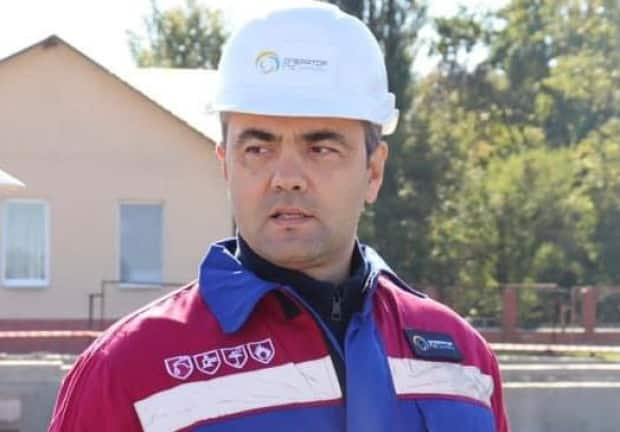
'Energy air defence'
Ukraine is one of four main pipeline corridors through which Russian gas flows to north, central and southern Europe, which together supply about 45 per cent of the gas the EU imports.
It doesn't import any gas from Russia itself but gets about $100 million US a month for ensuring it makes it to Europe. More importantly, Makogon said, it ensures Russia can collect the roughly $900 million a day it makes from selling gas to Europe.
"We call it kind of our energy air defence," he said. "We believe that as long as we have a transit, the Russians would not deliberately destroy our infrastructure, and we will be able to deliver gas to our local population."
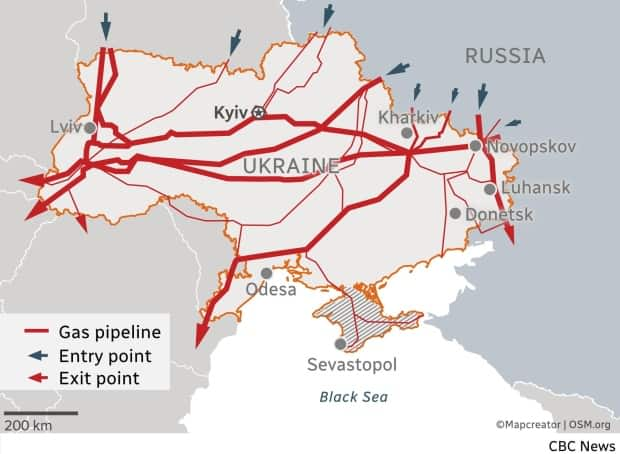
Ultimately, Ukraine would like to see Europe put a full embargo on Russian oil and gas, but it realizes a gradual phase-out is more likely, Makogon said.
"We understand that, unfortunately, Europe is too dependent on Russian gas."
Russia, for its part, is in no hurry to cut off the revenue stream that Europe's energy demands generate, Balmaceda said. It made 99 billion euros ($136 billion Cdn) last year from oil and gas sales to the EU.
"The reality is that they need those sources of income," she said.
Percentage of natural gas coming from Russia
Embed:
Balmaceda said there have been only a few times Russia has used the disruption of supply as leverage: in 2006 and 2009 in price disputes with Ukraine and last fall, when it reduced gas supplies to put pressure on European partners to expedite the Nord Stream 2 pipeline to Germany, which was suspended In February over Russia's recognition of breakaway republics in Eastern Ukraine.
"They have really worked on this idea of being a reliable supplier," said Balmaceda, who is also an associate at Harvard University's Davis Center for Russian and Eurasian Studies and at the Harvard Ukrainian Research Institute.
While Gazprom said in its email to CBC that it "continues to provide reliable gas exports to consumers," it also said it would be following through on Russian President Vladimir Putin's order requiring "unfriendly" countries to transfer foreign-currency payments for Russian gas into ruble accounts.
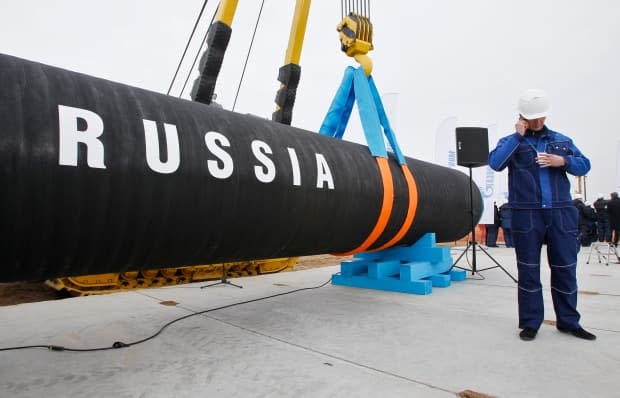
Options to expand east limited
Whether Russia would cut off supply to those who don't comply is unclear, but Carlos Torres Diaz, an analyst with Rystad Energy, an energy market research company in Oslo, says redirecting gas to other markets would not be something Russia can do quickly and easily.
Russia has been expanding gas exports to China in recent years, but its current pipeline to the region does not connect to the West Siberia and Yamal gas fields where Europe's gas comes from, so diverting that supply would require building new connections, expansion projects that are in jeopardy because of sanctions imposed on Russia over its invasion of Ukraine.
Where does Russia export its fossil fuels?
"A lot of this infrastructure was being developed together with Western companies like Exxon, for example, but they are pulling out," Torres Diaz said.
Europe, for its part, did take a step toward weaning itself off Russian energy last week by banning imports of Russian coal starting in August and said on Thursday it was considering a similar ban on oil, but doing the same for natural gas would be much harder, Torres Diaz said.
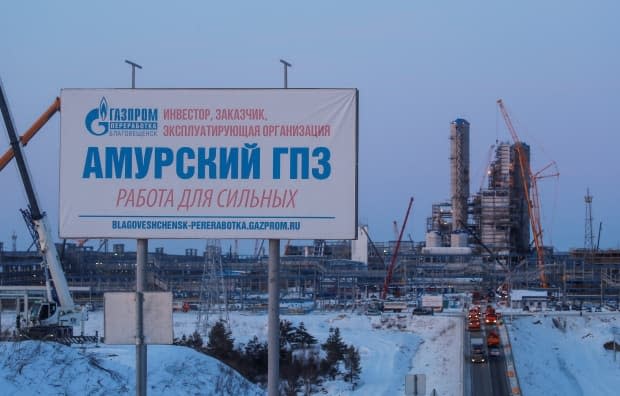
EU looks to LNG, renewables
Diaz and other analysts say European countries will have to scramble to build up natural gas stores for next winter and reach the ambitious target the European Commission (EC) has set of reducing Russian gas imports by two-thirds by the end of the year and phasing out all fossil fuel imports from Russia by 2030.
Finding a way to replace the 155 billion cubic metres of natural gas a year Europe imports from Russia will mean increasing sources such as liquified natural gas, or LNG, which is transported by ship and regasified on the other end.
Efforts to replace piped gas from Russia with LNG are constrained by existing supply, however, much of which is tied up in long-term contracts. New projects are not expected to come online until 2024 or 2025.
"The major source of increased supplies would be the U.S. because that's one of the closest markets and also because the U.S. has the most flexibility with LNG supplies given that not so much of the volume is sold to long-term contracts," Torres Diaz said.
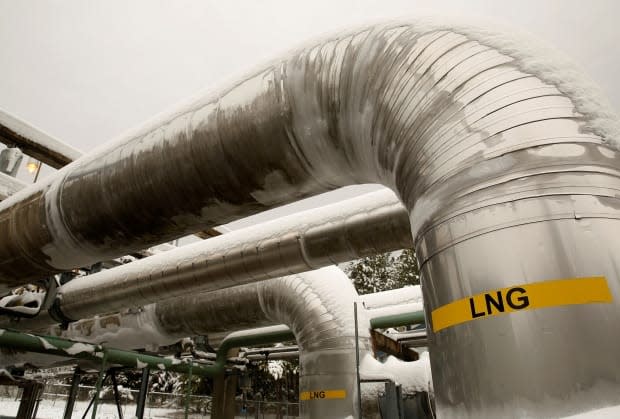
Europe competes with Asia for the LNG available on the so-called spot market and while the recent record high prices make diverting it to Europe an attractive option, that may not be the case next winter, said Anne-Sophie Corbeau, a Paris-based research scholar at the Center on Global Energy Policy at New York's Columbia University.
The U.S. did announce last week it would provide an additional 15 billion cubic metres of LNG to Europe by the end of 2022, but Corbeau estimates it would take 18 times that to replace all of the piped gas supply from Russia.
EU energy imports by source
Embed:
Rapid ramp-up needed
The EU has capacity to absorb about 50 billion cubic metres of LNG a year, according to EC estimates, but ramping up volume beyond that will require spending billions of euros building new terminals to re-gasify it and the infrastructure to distribute it.
It also comes with implications for Europe's commitment to make big cuts in carbon and, especially, methane emissions as LNG is energy intensive and by some estimates has a larger environmental footprint than piped gas.
Beefing up capacity beyond LNG is also a long-term proposition. Nuclear energy is still one of Europe's largest sources of electricity, but building new power plants would take years and is politically unpopular in parts of the EU, notably, Germany, which aims to phase out nuclear power by 2030.
"What would actually help is not to decommission the nuclear power plants, but I mean, good luck with that," Corbeau said.
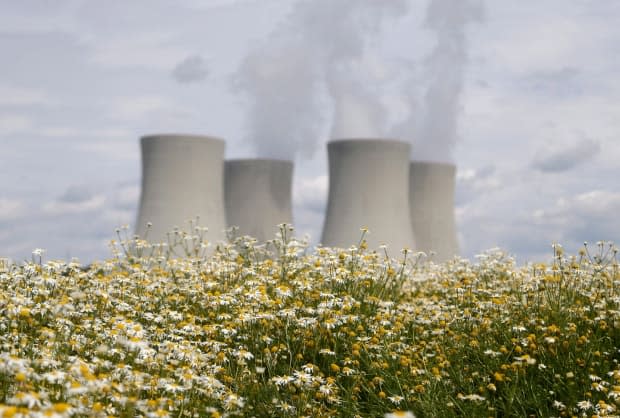
Biomethane, renewable hydrogen and other green energy sources are a key part of the EU's plan to transition away from Russia but would require a rapid expansion of existing commitments.
"Solar and wind … are not flexible sources, " Torres Diaz said. "They will be generating as much as they can. You cannot really increase it from one day to the other."
Replacing the energy from Russian gas with wind, for example, would require increasing capacity by 370 gigawatts, Corbeau estimates, far above the 17 GW Europe added last year.

Ultimately, said Corbeau, Europe won't be able to avoid doing the two things it has resisted so far: conserving and hiking energy prices.
"I am really surprised … about the absence of urgency and telling people, 'You need to reduce your consumption now,'" she said.
"We are in a crisis. We need to save energy. Every single kilowatt hour of gas electricity that you are saving now is going to help us next winter."
WATCH | Russia's focus shifts east as fears over chemical weapons grow:


